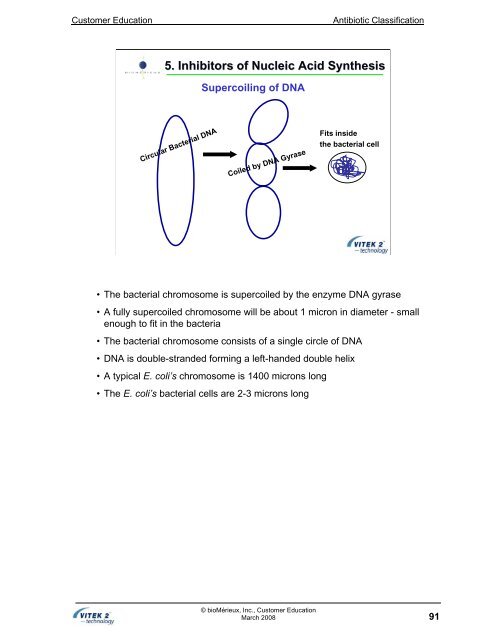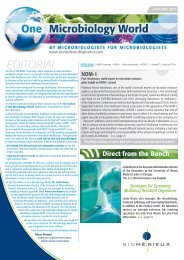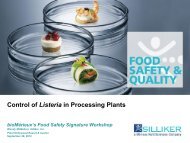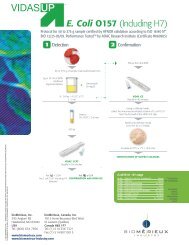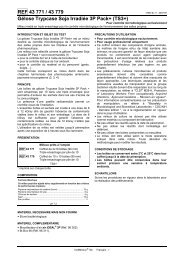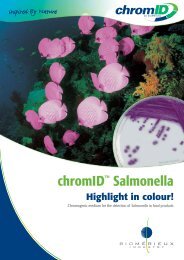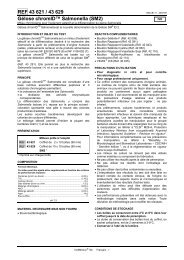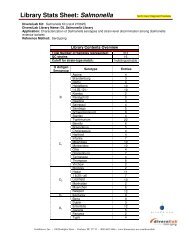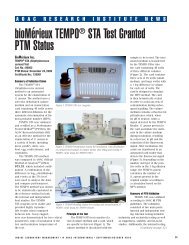Antibiotic Classification and Modes of Action - bioMerieux
Antibiotic Classification and Modes of Action - bioMerieux
Antibiotic Classification and Modes of Action - bioMerieux
You also want an ePaper? Increase the reach of your titles
YUMPU automatically turns print PDFs into web optimized ePapers that Google loves.
Customer Education <strong>Antibiotic</strong> <strong>Classification</strong><br />
5. Inhibitors <strong>of</strong> Nucleic Acid Synthesis<br />
Circular Bacterial DNA<br />
Supercoiling <strong>of</strong> DNA<br />
Coiled by DNA Gyrase<br />
© bioMérieux, Inc., Customer Education<br />
March 2008<br />
Fits inside<br />
the bacterial cell<br />
• The bacterial chromosome is supercoiled by the enzyme DNA gyrase<br />
• A fully supercoiled chromosome will be about 1 micron in diameter - small<br />
enough to fit in the bacteria<br />
• The bacterial chromosome consists <strong>of</strong> a single circle <strong>of</strong> DNA<br />
• DNA is double-str<strong>and</strong>ed forming a left-h<strong>and</strong>ed double helix<br />
• A typical E. coli’s chromosome is 1400 microns long<br />
• The E. coli’s bacterial cells are 2-3 microns long<br />
91


